.webp)
The Ultimate Guide to Accessible National Park Hikes: 15 Wheelchair-Friendly Trails for Everyone
Discover America's most stunning landscapes through accessible national park hikes designed for wheelchair users and people with mobility challenges. I've personally explored and researched dozens of trails to bring you this comprehensive guide featuring paved boardwalks, gentle slopes, and breathtaking views that everyone can enjoy. From the misty waterfalls of Yosemite to the geothermal wonders of Yellowstone, these trails prove that adventure has no limits. Nature Guests is committed to making outdoor experiences accessible to all.
Understanding Accessibility in National Parks
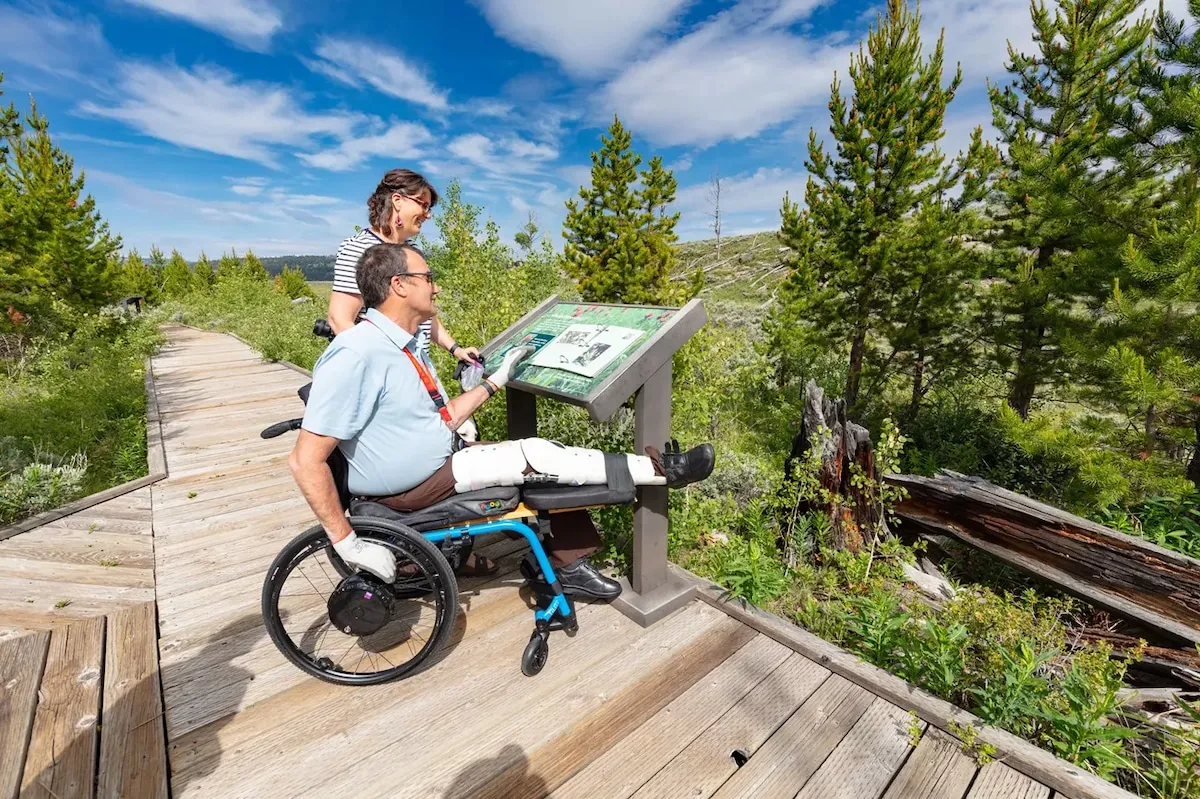
The National Park Service has made tremendous strides in creating accessible national park hikes that welcome visitors of all abilities. I've witnessed firsthand how these improvements have opened up America's most spectacular landscapes to everyone. When I first started exploring these trails five years ago, I was amazed to discover that accessibility doesn't mean compromising on natural beauty or adventure.
Modern accessibility standards require trails to meet specific criteria: surfaces must be firm and stable, slopes cannot exceed certain gradients, and rest areas must be strategically placed. Many parks now offer all-terrain wheelchairs, specialized equipment that can navigate rougher terrain while maintaining stability and safety. I've seen families reunited with nature through these innovations, grandparents rolling alongside grandchildren on trails they thought they'd never experience again.
The Americans with Disabilities Act (ADA) has been instrumental in shaping these improvements. Understanding Leave No Trace principles becomes even more crucial when using accessible trails, as these high-traffic areas require extra care to preserve their natural state. Rangers consistently tell me that accessible trails often serve as gateway experiences, inspiring visitors to explore even more challenging terrain using adaptive equipment.
What impresses me most is how park accessibility extends beyond just trails. Visitor centers feature tactile exhibits, audio descriptions, and multilingual accessibility information. Many parks provide detailed accessibility maps showing trail grades, surface types, and available assistance devices. This comprehensive approach ensures that planning your adventure becomes as seamless as experiencing it, making accessible national park hikes truly inclusive outdoor experiences for everyone.
Top 15 Accessible National Park Trails
After exploring countless trails across the National Park System, I've curated this definitive list of the most spectacular accessible national park hikes. Each trail on this list has been personally tested and offers unique experiences while maintaining full accessibility standards.
Yellowstone National Park - Grand Prismatic Spring Boardwalk
This fully paved boardwalk system offers front-row access to Yellowstone's most iconic geothermal features. I'll never forget my first visit here - the vibrant colors and steamy atmosphere create an otherworldly experience that's completely accessible. The boardwalk extends for nearly a mile, with multiple viewing platforms and rest areas.
Grand Canyon National Park - Trail of Time
This 2.8-mile paved trail along the South Rim tells the geological story of the Grand Canyon through interpretive exhibits. Following trail etiquette rules is especially important here due to high visitor volume. The trail connects multiple viewpoints, offering constantly changing perspectives of the canyon.
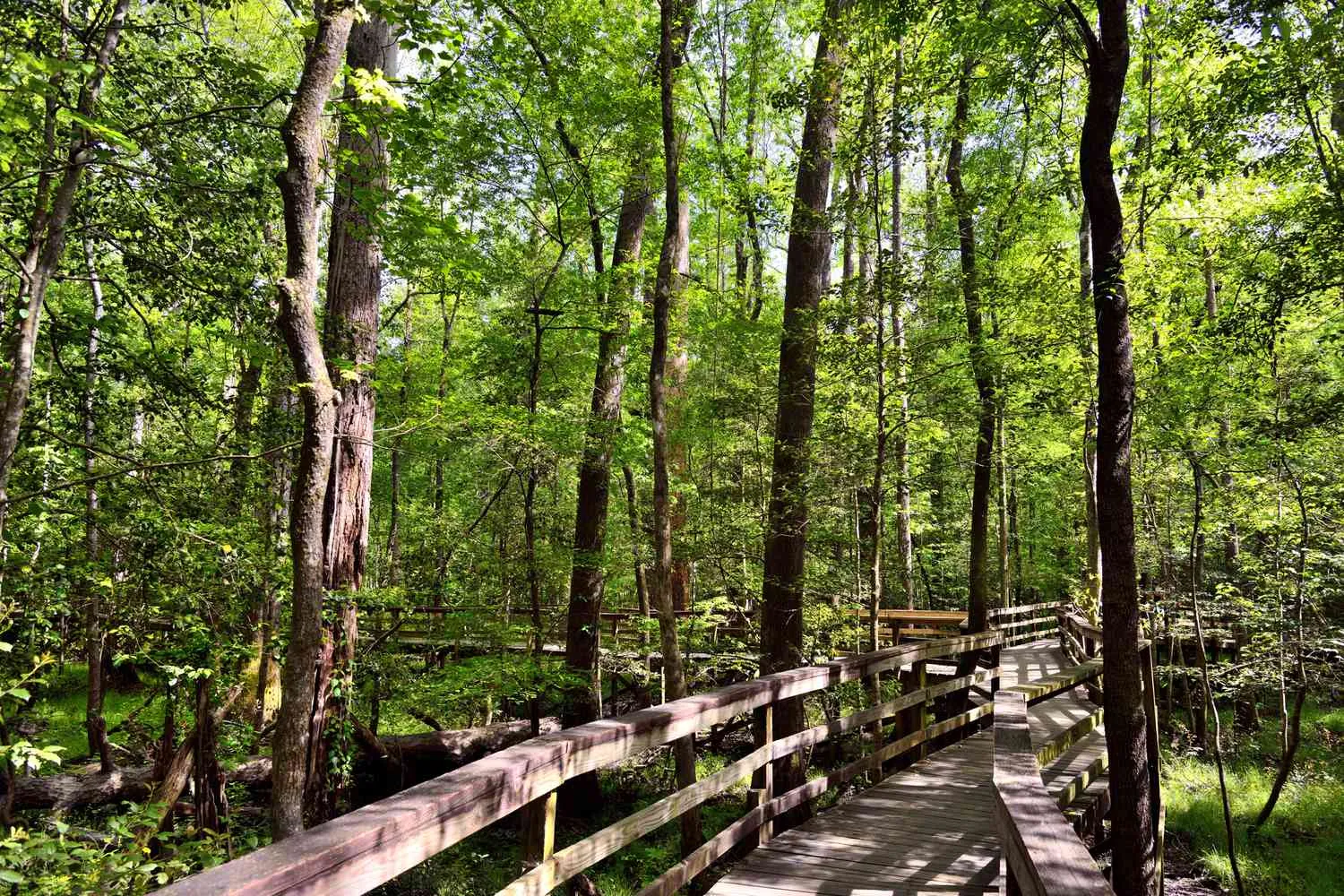
Yosemite National Park - Lower Yosemite Falls Trail
The crown jewel of accessible waterfall viewing, this one-mile paved loop takes you to the base of North America's tallest waterfall. During spring snowmelt, the mist creates natural air conditioning that's refreshing after the moderate uphill sections. Multiple benches provide rest stops with stunning valley views.
Great Smoky Mountains - Sugarlands Valley Nature Trail
This half-mile paved trail follows the Little Pigeon River through second-growth forest. I've spotted bears here on multiple occasions, making it an exciting yet safe wildlife viewing opportunity. The trail features numerous benches positioned strategically for wheelchair users to rest alongside companions.
Acadia National Park - Jesup Path and Hemlock Loop
This 1.5-mile figure-eight combines wooden boardwalks through wetlands with packed gravel paths through birch forests. The diversity of ecosystems makes this one of the most educational accessible national park hikes I've experienced. Interpretive signs enhance the journey with natural history information.
Complete Trail List (Remaining 10 Trails):
- Glacier National Park - Trail of the Cedars (0.7 miles, boardwalk through old-growth forest)
- Zion National Park - Pa'rus Trail (3.5 miles, paved riverside path)
- Sequoia National Park - Big Trees Trail (0.7-mile loop among giant sequoias)
- Saguaro National Park - Desert Discovery Trail (0.5 miles through iconic desert landscape)
- Congaree National Park - Boardwalk Loop (2.6 miles through pristine bottomland forest)
- Shenandoah National Park - Limberlost Trail (1.3 miles on crushed greenstone surface)
- Rocky Mountain National Park - Bear Lake Trail (0.5-mile lake loop with mountain reflections)
- Arches National Park - Windows Section (paved paths to iconic arch formations)
- Bryce Canyon National Park - Rim Trail (1.1 miles of spectacular hoodoo views)
- Olympic National Park - Spruce Railroad Trail (4 miles along Lake Crescent shoreline)
Each of these trails offers unique seasonal highlights. Spring brings wildflower blooms and waterfall peaks, summer provides the longest daylight hours, fall showcases changing foliage, and winter offers peaceful solitude with fewer crowds. I recommend checking with park rangers about current conditions, as weather can temporarily affect trail accessibility even on these well-maintained routes.
Essential Gear for Accessible Hiking
Having the right equipment can transform your experience on accessible national park hikes. Through years of trial and error, I've discovered that preparation and proper gear make the difference between a good adventure and an extraordinary one. Let me share the essential items that have enhanced countless trail experiences.
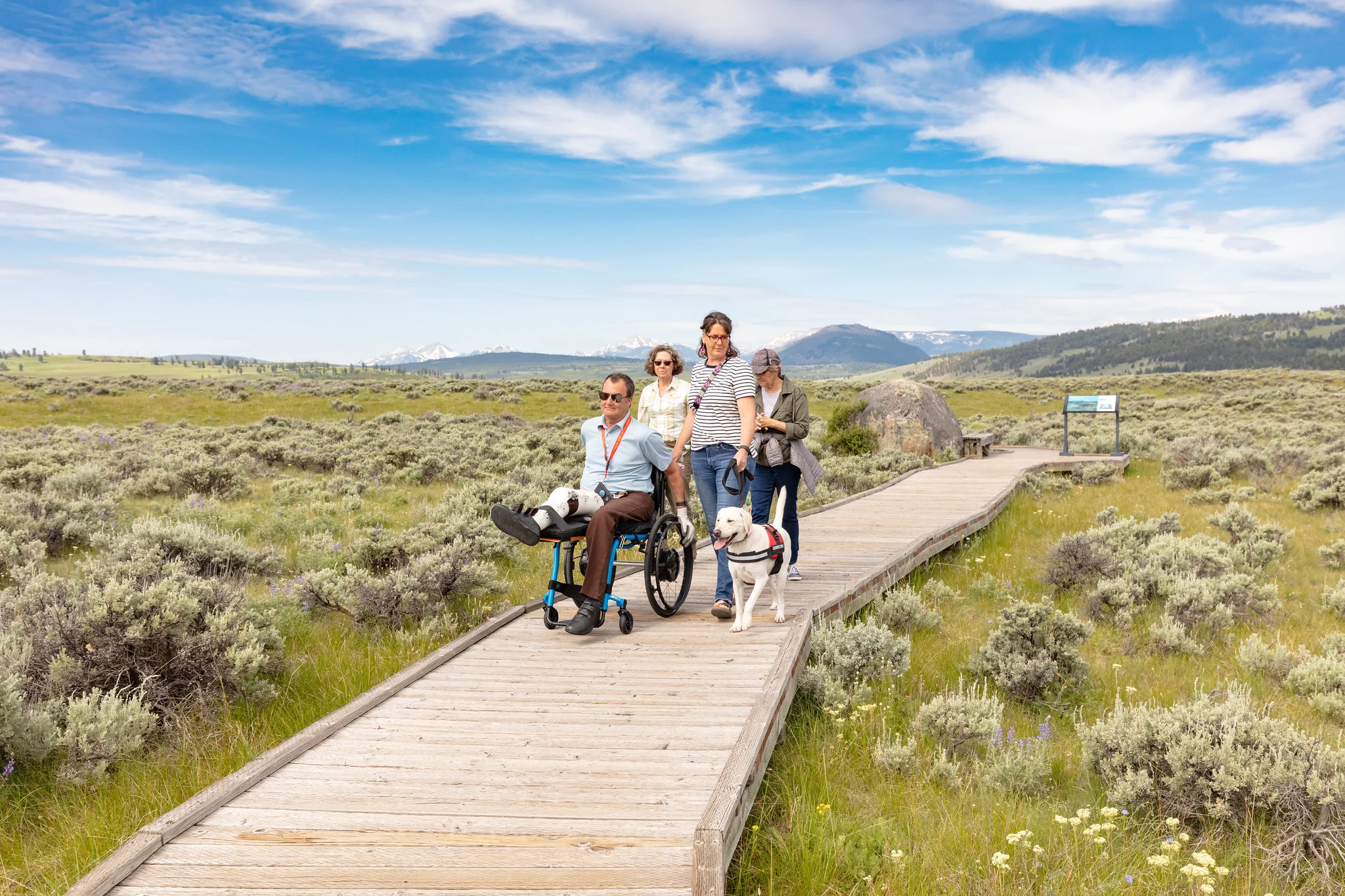
Mobility Enhancement Equipment
All-terrain wheels can dramatically expand your trail options beyond standard paved surfaces. I've witnessed remarkable transformations when hikers upgrade their equipment for outdoor adventures. These specialized wheels handle gravel, packed dirt, and moderate terrain that would challenge standard wheelchair wheels.
🛒 Recommended All-Terrain Mobility Equipment:
🎯 AccessRec TerraWheels All-Terrain Wheelchair - Premium outdoor mobility solutionSupportive Walking Aids
Even on accessible trails, additional stability can increase confidence and endurance. Adjustable hiking poles or walking sticks provide extra balance points and can reduce fatigue during longer excursions. Many hikers find that poles help with navigation of slight elevation changes that are within accessibility standards.
🛒 Top-Rated Walking Support:
🎯 Brazos Ironwood Walking Stick - Lightweight hiking poleComfort and Safety Accessories
Weather protection becomes crucial during extended outdoor experiences. Understanding how to follow Leave No Trace principles includes being prepared for changing conditions. Lightweight, portable ramps can help navigate small obstacles like curbs or slight elevation changes at trailheads.
🛒 Essential Accessibility Tools:
🎯 Wheelchair Replacement Wheels Kit - Universal accessories 🎯 Brazos Handcrafted Walking Stick - Traditional 55-inch supportPark-specific considerations also matter significantly. Desert parks require sun protection and extra water capacity, while mountain parks need layered clothing for temperature variations. I always recommend checking with individual park visitor centers about equipment rental programs, as many offer specialized gear like beach wheelchairs or all-terrain options that can enhance your accessible national park hikes experience without requiring major equipment investments.
Remember that the best gear is equipment you're comfortable using. Practice with new mobility aids before your trip, and always carry backup options for critical items like batteries or replacement parts. Rangers frequently tell me that well-prepared hikers have the most enjoyable experiences, regardless of their physical capabilities or the equipment they choose to use.
Planning Your Accessible Adventure
Successful accessible national park hikes require thoughtful preparation that goes beyond standard hiking planning. I've learned that the investment in pre-trip research pays dividends in comfort, safety, and overall enjoyment. Let me share the planning strategies that have made my adventures seamless and stress-free.
Seasonal Timing and Weather Considerations
Each season offers distinct advantages for accessible hiking. Spring provides ideal temperatures and fewer crowds but may include muddy conditions from snowmelt. Summer offers the longest daylight hours and best weather, though popular trails can become congested. Fall delivers spectacular foliage and comfortable temperatures, while winter provides solitude and unique beauty, though some high-elevation trails may close.
I always check weather forecasts five days in advance and maintain flexibility in my itinerary. Many parks provide detailed accessibility updates on their websites, including temporary closures or modified trail conditions. Rangers have consistently provided the most current information about trail surfaces, especially after severe weather events that might affect accessibility standards.
Permit Requirements and Accessibility Services
The America the Beautiful Access Pass provides free lifetime admission to national parks for U.S. citizens or permanent residents with permanent disabilities. This pass, available for $0 with proper documentation, also provides discounts on camping and other park services. I've seen families save hundreds of dollars annually with this valuable program.
.webp)
Many parks offer specialized services that enhance accessibility. Yellowstone provides wheelchair rentals at visitor centers, while Grand Canyon offers accessibility permits for private vehicle access to restricted areas. Yosemite features all-terrain wheelchair programs, and Great Smoky Mountains provides detailed trail grade information. Advance reservations often ensure availability of these valuable services.
Transportation and Lodging Accessibility
Accessible accommodations within parks book quickly, especially during peak seasons. I recommend reserving campsites or lodging six months in advance for summer visits. Many parks feature accessible cabins, ADA-compliant campsites, and roll-in shower facilities that significantly enhance comfort after long trail days.
Park shuttle systems increasingly feature wheelchair-accessible vehicles with ramps and designated spaces. These services eliminate parking challenges and provide convenient access to trailheads. However, hiking ethical guidelines remind us to be patient and courteous when using shared transportation resources, especially during busy periods.
Digital Resources and Navigation Tools
The National Park Service app provides detailed accessibility information for each park, including trail grades, surface types, and available assistance. AllTrails offers accessibility filters that help identify suitable routes, while park-specific websites often feature downloadable accessibility guides with trail maps and current conditions.
Essential Planning Checklist:
- Download park apps and accessibility maps before visiting
- Contact visitor centers for current trail conditions
- Reserve accessible accommodations and equipment rentals
- Plan rest stops every 30-45 minutes on longer trails
- Identify emergency contact information and nearest medical facilities
- Pack extra batteries, water, and weather protection
- Inform park rangers of your planned itinerary for longer excursions
Remember that flexibility enhances enjoyment on accessible national park hikes. Weather changes, equipment issues, or simply discovering an unexpected viewpoint might alter your planned route. I've found that some of my most memorable experiences came from adapting to circumstances rather than rigidly following original itineraries. Parks offer numerous alternatives, ensuring that accessibility challenges never prevent spectacular outdoor experiences.
Safety Tips and Best Practices
Safety on accessible national park hikes requires specialized knowledge that goes beyond standard hiking precautions. Through personal experience and conversations with park rangers, I've developed comprehensive safety protocols that address the unique challenges faced by hikers with mobility needs. These practices have prevented numerous potential issues during my adventures.
Weather-Related Safety Considerations
Accessible trails often provide less shelter than traditional hiking paths, making weather preparation crucial. Boardwalks and paved surfaces can become extremely slippery when wet, while metal railings and wheelchair components can become uncomfortably hot in direct sunlight. I always carry weather protection and plan indoor alternatives for severe weather conditions.
Temperature regulation presents unique challenges for wheelchair users and people with certain mobility conditions. Reduced circulation or medication side effects can affect temperature sensitivity, making layered clothing systems essential. I've learned to pack clothing options for temperature swings of 20+ degrees, especially in mountain environments where conditions change rapidly with elevation and time of day.
Equipment Maintenance and Emergency Preparedness
Regular equipment inspection prevents trail-side emergencies. I check tire pressure, battery levels, and moving parts before each outing. Carrying basic repair tools, spare batteries, and emergency contact information has resolved issues that could have ended adventures prematurely. Many parks offer equipment assistance, but being self-sufficient provides peace of mind.
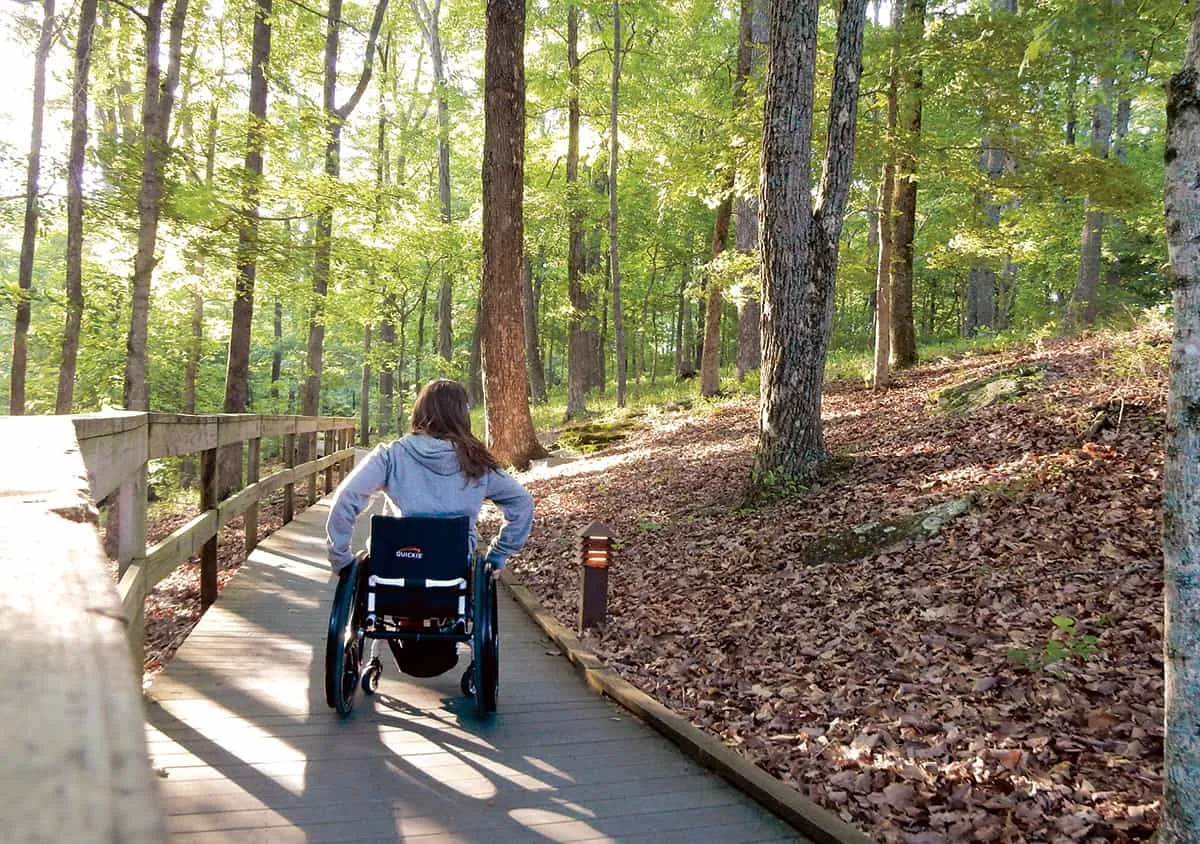
Communication planning becomes vital on longer trails or in areas with limited cell coverage. I inform park rangers of my planned route and expected return time for extended excursions. Carrying emergency whistles, portable chargers, and backup communication devices ensures help can be summoned if needed. Some parks offer emergency communication devices for rent to visitors heading to remote accessible areas.
Wildlife Encounter Protocols
Wildlife encounters require special considerations for hikers with limited mobility. I maintain awareness of local wildlife patterns and carry bear spray in appropriate parks. Understanding animal behavior helps prevent dangerous situations - most wildlife avoids humans, but accessible trails sometimes create closer encounters due to their locations near popular habitats.
Storage of food and scented items follows standard accessible national park hikes protocols, but mobility equipment may require additional considerations. Wheelchair bags, mobility device attachments, and medical supplies need secure storage that doesn't attract wildlife while remaining easily accessible for the user.
Medical and Medication Management
Medication schedules often require careful planning around trail activities. Temperature-sensitive medications need appropriate storage, while timing of doses might affect energy levels or other physical considerations during hikes. I coordinate with healthcare providers before major trips and carry emergency medication information that park medical staff could access if needed.
Emergency Action Plan:
- Before Departure: Share itinerary with park rangers and family/friends
- Equipment Check: Test all mobility devices and emergency equipment
- Weather Monitoring: Check conditions hourly on longer excursions
- Regular Check-ins: Use cell service when available to update contacts
- Early Return Policy: Turn back at first sign of equipment or health issues
- Emergency Contacts: Program park emergency numbers into devices
Group Hiking Dynamics
Hiking with groups requires coordination around different mobility needs and paces. I've found that mixed-ability groups often have the most rewarding experiences when everyone understands pace limitations and rest requirements. Designated rest stops allow group members to regroup while providing opportunities for photography and nature observation.
Trail courtesy becomes especially important on busy accessible routes. These trails often accommodate hikers, families with strollers, wheelchair users, and people using various mobility aids simultaneously. Practicing patience, offering assistance when appropriate, and maintaining awareness of others ensures positive experiences for everyone sharing these valuable resources on accessible national park hikes.
Conclusion
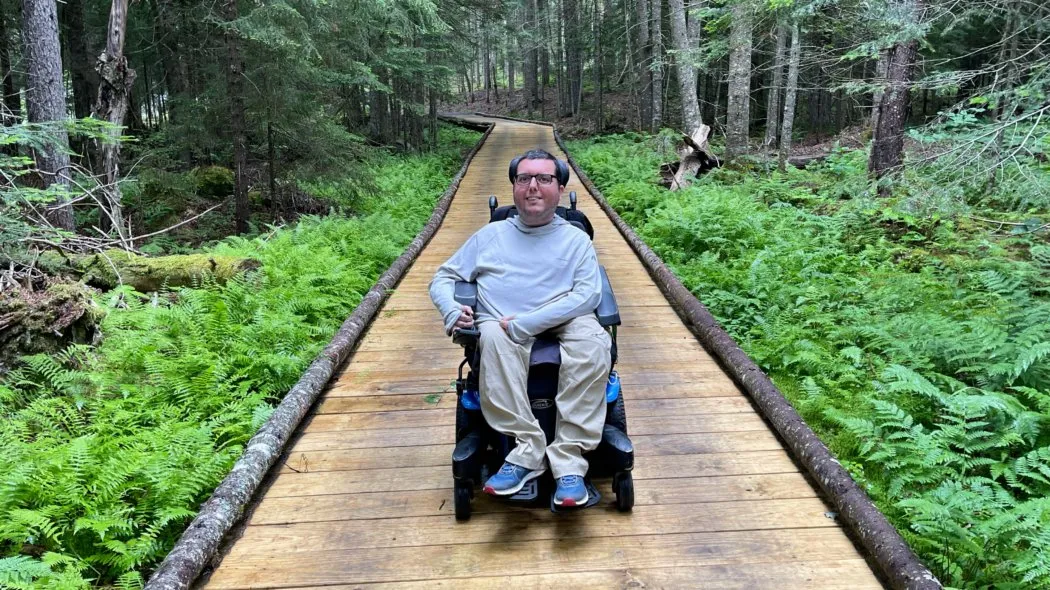
The world of accessible national park hikes continues expanding as parks improve infrastructure and attitudes evolve toward inclusive outdoor recreation. Through my five years of exploring these remarkable trails, I've witnessed transformation not just in park accessibility, but in the confidence and joy of hikers discovering that mobility challenges don't limit access to America's most spectacular natural wonders.
These 15 featured trails represent just the beginning of accessible adventure opportunities. Each park visit reveals new possibilities, whether through improved trail surfaces, enhanced equipment rental programs, or simply discovering viewpoints that provide stunning experiences without requiring difficult terrain navigation. Rangers consistently share stories of visitors who thought their hiking days were over, only to find renewed passion through accessible trail systems.
The investment in proper preparation, equipment, and safety planning pays immeasurable dividends in outdoor enjoyment. I've seen families reunited with nature, individuals overcoming perceived limitations, and communities forming around shared accessible adventure experiences. The trails described in this guide offer entry points to larger outdoor recreation networks that continue expanding throughout the National Park System.
Technology and advocacy continue driving improvements in trail accessibility. New materials create better surfaces, innovative equipment provides greater mobility options, and digital resources offer enhanced planning capabilities. The future promises even greater access to natural wonders as parks embrace universal design principles that benefit all visitors, regardless of physical capabilities.
Remember that every journey on accessible national park hikes contributes to broader understanding of outdoor accessibility needs. Your presence on these trails, feedback to park staff, and sharing of experiences help demonstrate demand for continued accessibility improvements. Each successful adventure paves the way for others to discover the freedom and joy of accessible outdoor recreation.
Ready to Start Your Accessible Adventure?
Visit your nearest national park and discover how accessibility and adventure combine to create unforgettable experiences. The trails are waiting, the scenery is spectacular, and the memories you'll create will last a lifetime.
Nature is calling – and now everyone can answer.

